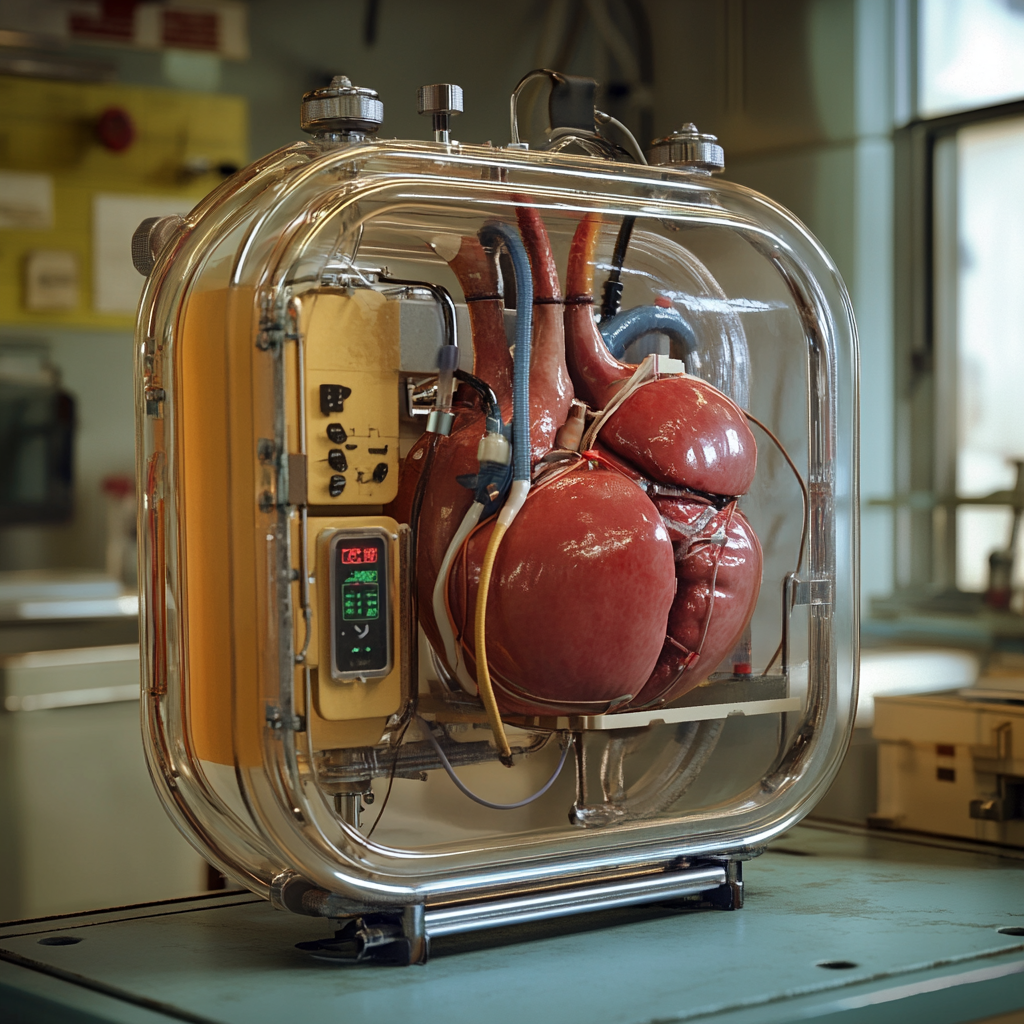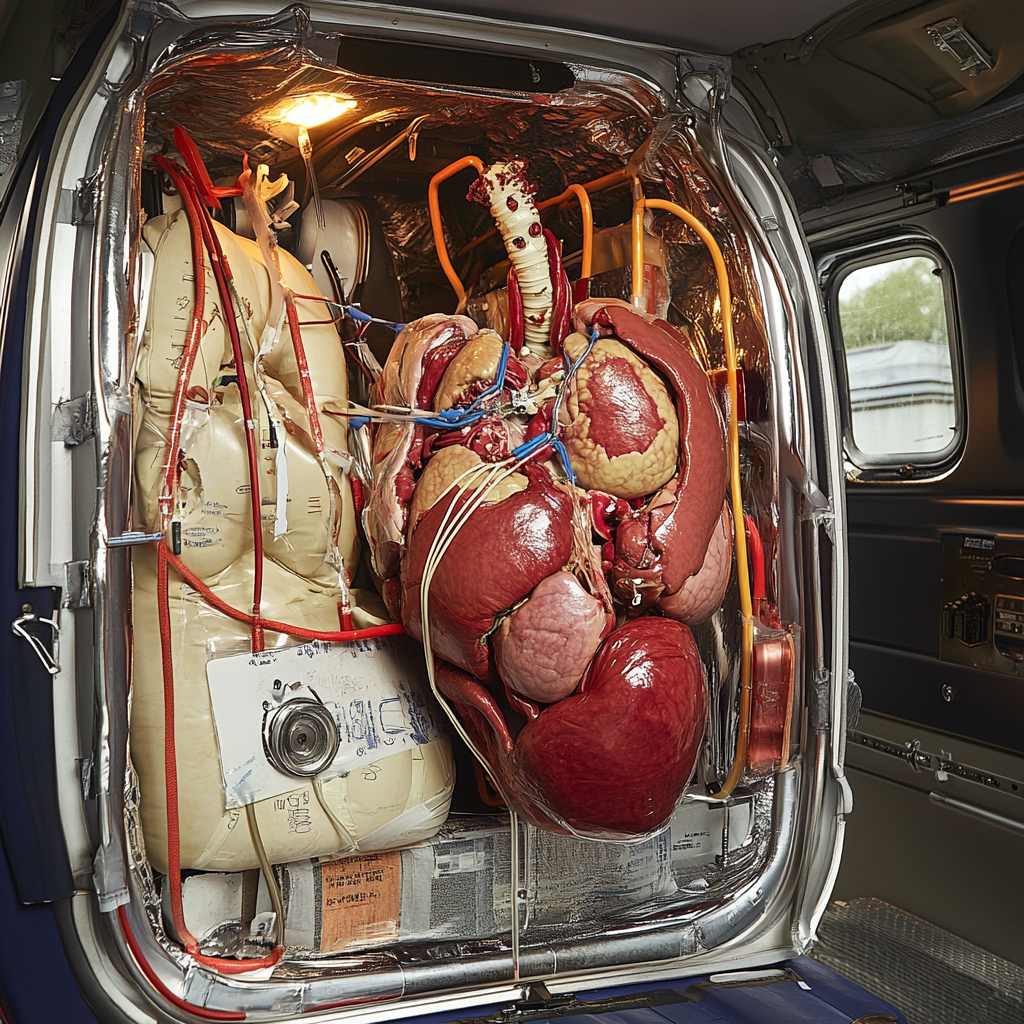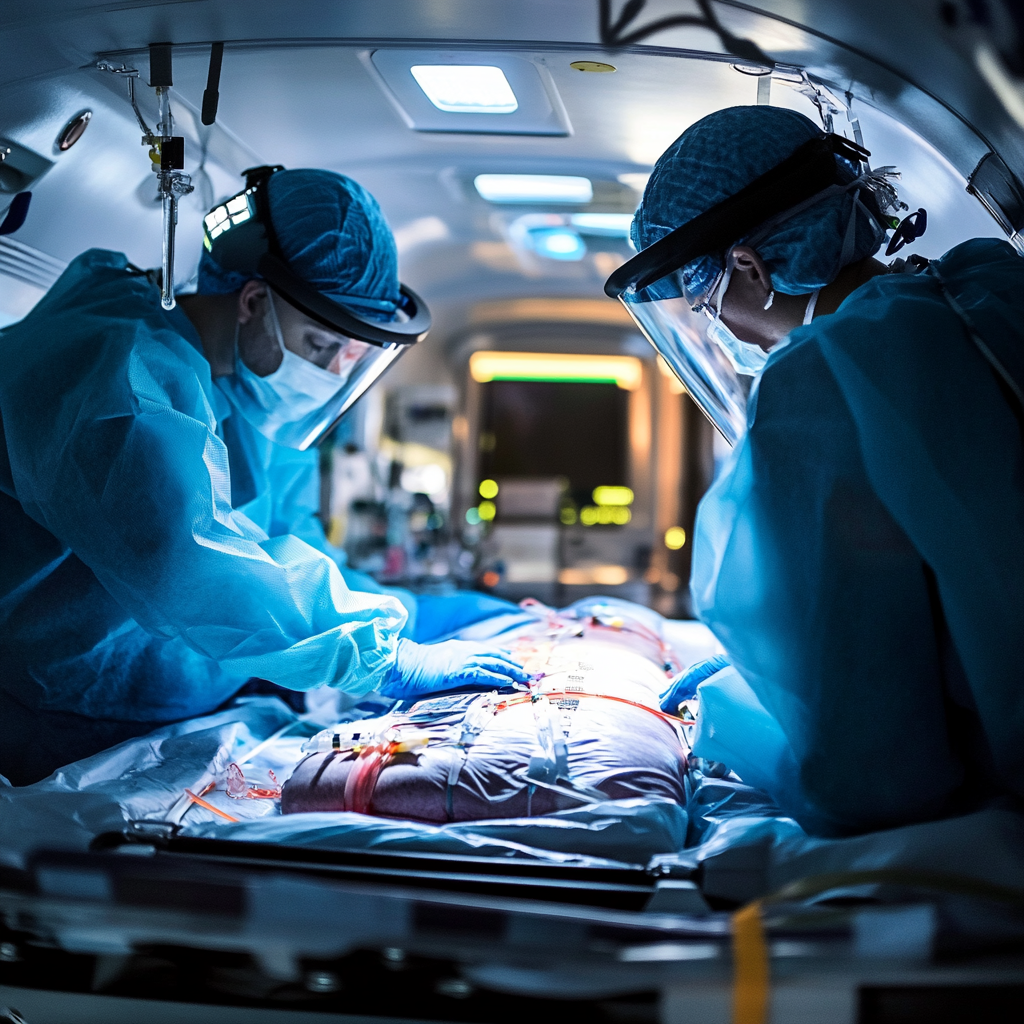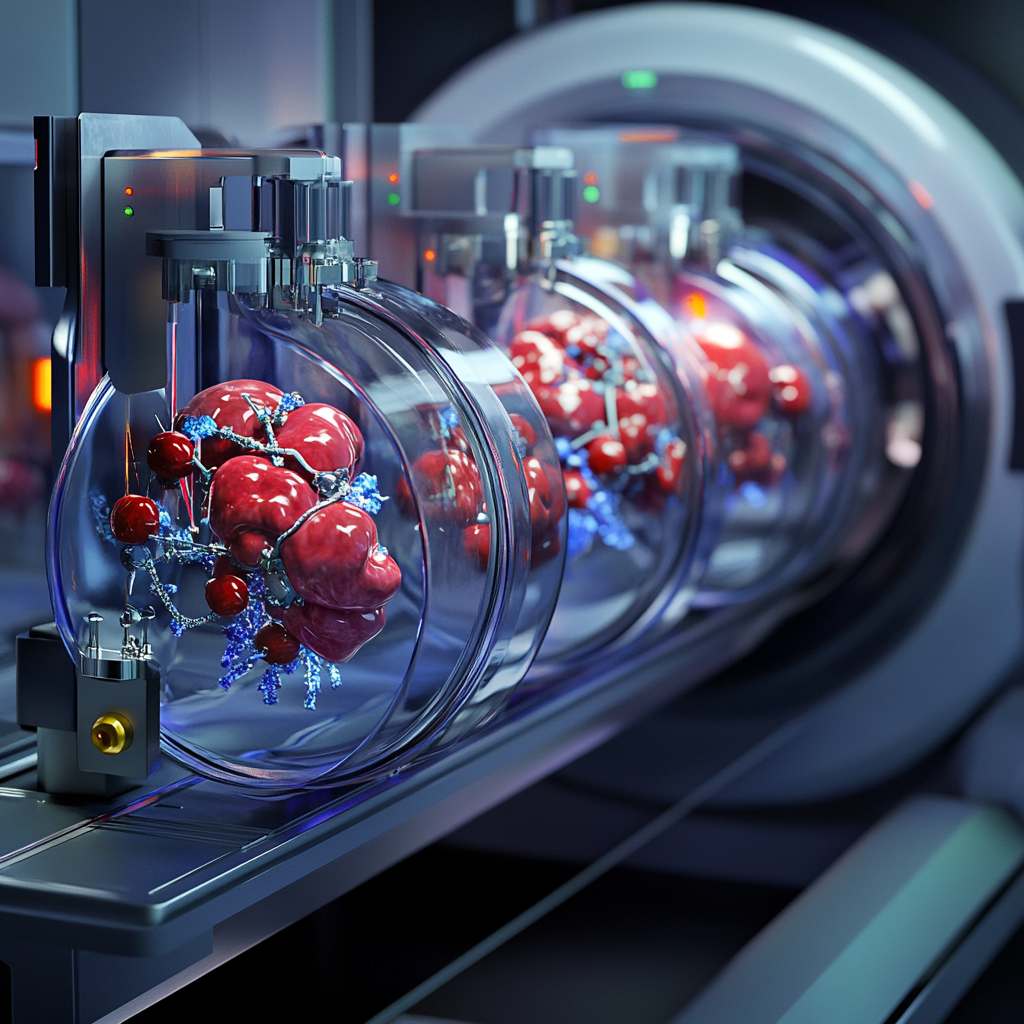Understanding Organ Transport Protocols: Essential Guidelines and Best Practices
Organ transport protocols are crucial for successful transplants, and understanding organ transport protocols ensures that organs are moved quickly and safely from donors to recipients while maintaining their viability. In this article, you’ll learn why these protocols matter, how they work, and the best practices involved. We’ll explore the role of Organ Procurement Organizations, key steps in the process, preservation techniques, and the transportation methods used.
Key Takeaways
Organ transport protocols are critical to ensuring the viability of donor organs, directly affecting transplant success rates.
Organ Procurement Organizations (OPOs) play a vital role in coordinating the retrieval, preservation, and transportation of organs, facilitating quick and effective communication between transplant teams.
Innovative solutions, including advanced preservation techniques and drone delivery, are being developed to enhance organ transport efficiency and improve overall transplantation outcomes.
The Importance of Organ Transport Protocols
Organ transplant success hinges on the meticulous execution of transport protocols. Each organ has a limited window of viability once removed from the donor. For example, kidneys can last 24-36 hours outside the body, while hearts remain viable for only 4-6 hours. This time-sensitive nature demands swift and efficient transportation to preserve the organ’s functionality and effectiveness for the transplant procedure.
Delays in the transport process can severely compromise the success rates of organ transplants. Effective protocols are crucial to prevent these delays and ensure that organs reach their recipients in optimal condition. These protocols directly influence transplant surgery outcomes and, ultimately, the lives of organ recipients.
Organ transport protocols are the backbone of the transplantation network, facilitating the swift movement of organs from donors to recipients and maximizing the potential for successful transplants, ultimately saving countless lives.
Organ Procurement Organizations (OPOs) Role in Transport
Organ Procurement Organizations (OPOs) are pivotal in the organ transplant process. These organizations coordinate the retrieval, preservation, and transportation of donor organs to transplant centers, ensuring that each step is meticulously managed. The logistics involved in organ transport are complex, requiring seamless collaboration between transplant teams and OPOs to prepare for surgery and maintain organ viability.
Transplant centers are notified electronically about available donor organs, prompting them to make swift decisions regarding acceptance. Rapid communication minimizes the time organs spend outside the body, preserving their functionality for successful transplantation.
OPOs play a crucial role in the transplantation network, acting as the bridge between donors and recipients. Their coordinated efforts ensure efficient and safe organ transport, significantly contributing to the success of transplants and saving lives through organ sharing.
Steps in the Organ Transport Process

The organ donation process begins with identifying an eligible deceased donor who has been declared deceased without damage to their organs. Once an eligible donor is identified, consent for organ donation is obtained by checking the national database for registered donors and discussing options with the family if the donor is not registered.
Organ recovery is then performed by a different surgical team than the one that cared for the donor, ensuring respect and preserving the body for funeral arrangements. This step is followed by matching donor organs with recipients using a computerized system that factors in various criteria to find the closest match. The recipient’s transplant hospital must be ready to perform surgery immediately upon the organ’s arrival to maintain its viability.
Documentation for each organ is scanned both before departure from the hospital and upon arrival at its destination to ensure accuracy and traceability. This meticulous documentation helps maintain the integrity of the organ transplant process. Transplant surgery must occur quickly after the organ’s removal, as some organs remain viable for only a limited time.
Preservation Techniques for Donor Organs
Transporting organs under specific protocols significantly preserves their viability, directly influencing transplant success rates. Effective transport protocols ensure that organs remain functional for transplantation, maximizing the potential for patient survival.
There are two main methods for preserving renal allografts during transportation: static cold storage and hypothermic machine perfusion. Hypothermic machine perfusion is often more effective than static cold storage for preserving kidney grafts, as it reduces the risk of delayed graft function. Additionally, some organs are transported using machines to maintain their condition, particularly lungs and kidneys. Each organ is preserved with specialized solutions and packed on ice before transport.
Devices like the Paragonix Sherpa Pak™ maintain donor organ temperatures within the optimal range of 4°C to 8°C during transport, minimizing cold injury and preserving viability. Conventional methods often lead to temperatures approaching 0°C, increasing the risk of damage. The Sherpa Pak™ system, which utilizes phase-change materials to store and release energy, can reliably maintain organ storage temperatures for up to 30 hours even under varying external conditions.
Did you know that you can get from Manhattan to JFK in under 5 minutes without driving?
Blade offers seamless helicopter transfers from our West 30th Street Lounge in Manhattan to JFK Airport in just 5 minutes from $195 per seat.
Skip the traffic and ditch the stress with Blade's year-round airport service.

Transportation Methods for Donor Organs

The mode of transport for donor organs is often based on the distance to the recipient, utilizing ambulances, helicopters, and airplanes. For shorter distances, ambulances are commonly used, while helicopters and airplanes are preferred for longer distances to ensure timely delivery.
Innovative technologies like electric-powered drones are also being explored to enhance the efficiency of organ transport. Drones not only shorten transport times but also aim to lower the carbon footprint associated with traditional transport methods. Transport method choice depends on factors like transplant urgency, distance to the recipient, and type of organ being delivered.
Each method of transport is carefully chosen to ensure that donor organs reach the recipient’s transplant hospital in the best possible condition. This careful selection process is crucial for maintaining the viability of the organs and ensuring successful transplants.
Ensuring Organ Safety During Transport

Ensuring the safety of organs during transport is a top priority in the organ transplant process. A specially prepared ice-cold preservation solution containing electrolytes and nutrients is used for organs before removal from the donor. This solution helps maintain the organ’s condition during transport.
Organs are placed in sterile containers for transport. They are then packaged in wet ice before being sent to the recipient’s transplant center. This method keeps the organs at a stable temperature, crucial for preserving their viability.
Additionally, the integration of drone technology in organ transport is seen as a reliable method for moving life-saving materials safely and efficiently. These measures ensure organs remain in optimal condition during transport, contributing to the success of the transplant surgery and the survival of recipients.
Coordination Between Transplant Teams and Hospitals
Timely communication and collaboration among transplant teams and hospitals are crucial for effective organ transplantation. Coordination ensures organs are transported quickly and efficiently, minimizing the time they spend outside the body.
Transplant teams must be prepared to perform surgery immediately upon the organ’s arrival. This preparation involves ensuring that all necessary medical equipment and personnel are ready and that the recipient is in optimal condition for the transplant. Collaboration between the transplant team and hospitals maintains organ viability and ensures successful transplants.
Smooth coordination among stakeholders, including OPOs, transplant centers, and hospitals, is essential for successful organ donation. This coordination helps save lives by ensuring that organs are transported and transplanted in a timely and efficient manner.
Legal and Ethical Considerations
The transportation of organs involves specific legal and ethical guidelines, particularly regarding cost responsibilities. LiveOnNY, for instance, is billed for the costs related to organ recovery, including transportation. The recipient’s transplant hospital reimburses LiveOnNY for these costs. The transplant hospital then recovers these costs through the recipient’s insurance company or Medicare. These financial arrangements ensure that the costs associated with organ transport are covered, allowing the process to proceed smoothly.
Obtaining consent for organ donation is a critical ethical consideration. The final decision to donate organs often involves discussions with the donor’s family and checking the national database for registered donors. These steps ensure the organ donation process respects the wishes of the donor and their family, conducted ethically and legally.
Did you know that you can get from Manhattan to JFK in under 5 minutes without driving?
Blade offers seamless helicopter transfers from our West 30th Street Lounge in Manhattan to JFK Airport in just 5 minutes from $195 per seat.
Skip the traffic and ditch the stress with Blade's year-round airport service.

Challenges and Solutions in Organ Transport

Common challenges in organ transport include logistical issues and unpredictable weather conditions that can impede timely delivery. These challenges can reduce organ viability, affecting transplant success rates.
Robust planning and communication strategies can mitigate many logistical challenges. Effective coordination and standardized transport protocols have been linked to improved outcomes in solid organ transplant programs globally.
Addressing these challenges ensures organs are transported efficiently and safely, maximizing the potential for successful transplants and saving lives.
Innovations in Organ Transport
Innovative technologies like drone delivery are being explored to enhance the efficiency of organ transport. Drones can shorten transport times and reduce the carbon footprint associated with traditional transport methods.
Advanced preservation techniques, such as hypothermic machine perfusion, are improving organ viability during transport. These techniques maintain organ condition, increasing the chances of successful transplants.
Real-time tracking systems monitor the status and location of organs during transport, ensuring timely delivery. These innovations are addressing current challenges and improving the coordination and efficiency of the organ transport process.
Bottom Line: Understanding Organ Transport Protocols: Essential Guidelines and Best Practices
Organ transport protocols are crucial for the success of organ transplants. From the role of OPOs to advanced preservation techniques and innovative transportation methods, each aspect of the process is designed to ensure that organs reach their recipients in optimal condition.
By understanding the importance of these protocols and the challenges involved, we can appreciate the complexity and significance of the organ transport process. The continuous innovations and improvements in this field are vital for saving lives and improving transplant outcomes.
FAQs about Understanding Organ Transport Protocols
Why are organ transport protocols so important?
Organ transport protocols are crucial for maintaining organ viability and functionality, which ultimately leads to successful transplants and the preservation of lives.
What role do Organ Procurement Organizations (OPOs) play in organ transport?
Organ Procurement Organizations (OPOs) play a crucial role in coordinating the retrieval, preservation, and transportation of donor organs, thereby ensuring efficient logistics and collaboration with transplant teams. Their efforts are vital for the timely and safe delivery of organs to recipients.
What are the main methods used to preserve donor organs during transport?
The primary methods for preserving donor organs during transport are static cold storage and hypothermic machine perfusion, along with advanced devices such as the Sherpa Pak™ system. These techniques ensure optimal preservation conditions for the donated organs.
How do drones enhance the efficiency of organ transport?
Drones significantly enhance the efficiency of organ transport by shortening delivery times and minimizing the carbon footprint compared to traditional methods, ensuring that organs reach their destination promptly. This innovation is vital for improving patient outcomes and saving lives.
What are some common challenges in organ transport, and how are they addressed?
Common challenges in organ transport include logistical issues and adverse weather conditions, which are addressed through careful planning, effective communication strategies, and the implementation of standardized protocols.
Disclaimer:
Please be aware that the content on this page has been generated by using artificial intelligence language models and may contain errors, inconsistencies, or outdated information. It is provided as-is without any warranties or guarantees of accuracy. We strongly recommend using this content as a starting point for further research. We disclaim any liability for damages or losses resulting from the use or reliance on this content.
